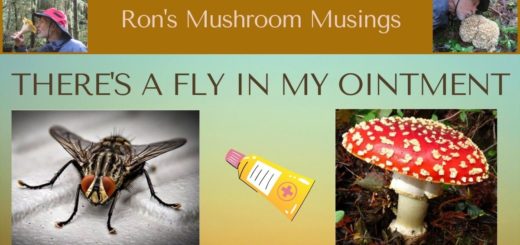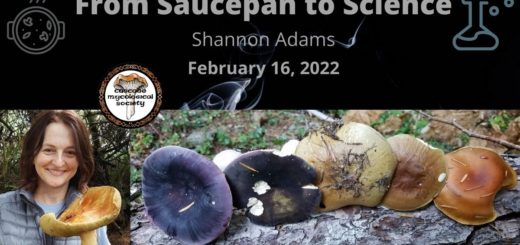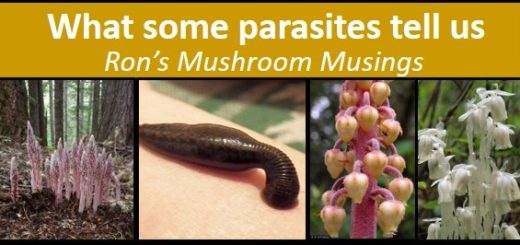Weird Mushrooms of Oregon
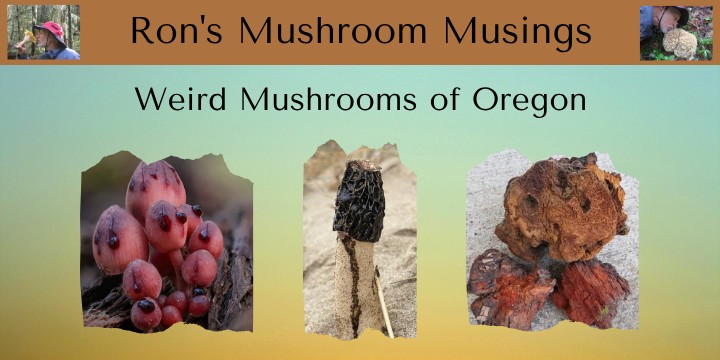

Have you ever wondered what strange yet interesting mushrooms might be living among us here in Oregon? Well, if not I’m going to tell you anyway. So let’s jump right in and start with a mushroom that is beloved by flies and other insects that enjoy the flavor and especially the aroma of week-old road kill. This highly fragrant saprotrophic mushroom is commonly known as the Dune Stinkhorn (Phallus hadriani). It starts out as an egg shaped mass buried in the sand and is found mostly along our coastal areas. As this mass expends from its egg state via cell elongation, it produces a whitish colored stem and dimpled looking cap with an outer gelatinous slime layer. Wow, doesn’t that just make your mouth salivate with anticipation?
While not considered poisonous, you’d need to have a completely dysfunctional olfactory system combined with a zero sense of taste to attempt to eat this mushroom in its mature state. While it does look quite like a Verpa bohemica, one good whiff will tell you it’s not. However, according to the National Library of Medicine’s website, P. hadriani in egg form shows no toxic properties and is considered a delicacy by the French. Remember, it was also the French that saw a large slimy snail crawling up a wall and thought how wonderful that would taste. If you’d like to experience P. hadriani for yourself, just head out to our coastal sand dunes during our fall season. To learn more about stinkhorn mushrooms, the website Shroomer has a very nice write-up of other stinkhorn species in this genus. Thankfully it’s not a scratch and sniff website.
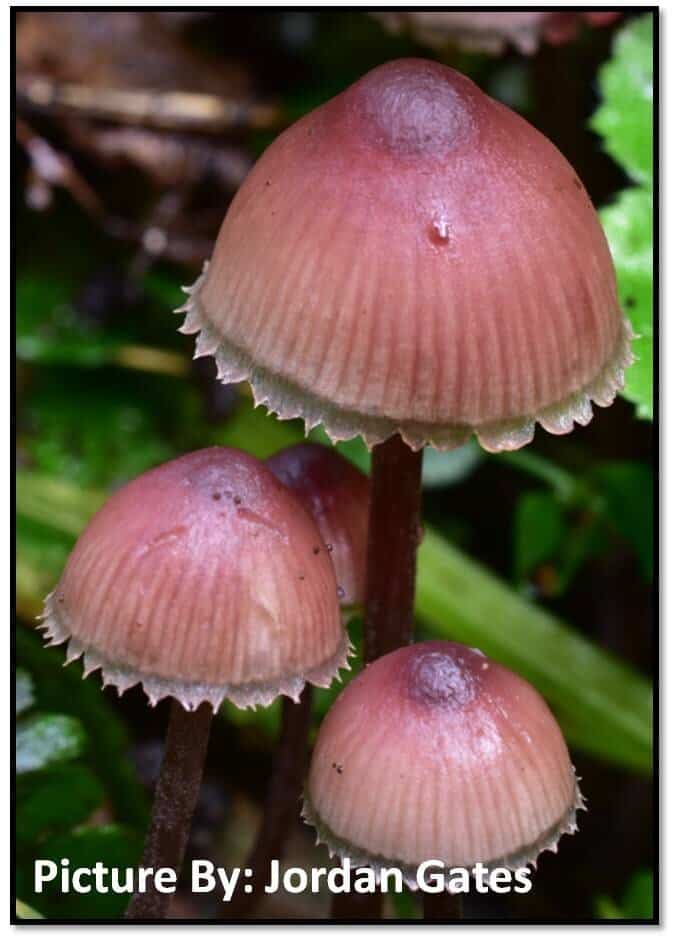
Moving from stinky to a more blood lust mushroom, we have the smallish but very interesting Mycena haematopus. The species name haematopus was derived from the Greek language and roughly translates to “blood foot” in English. It relates to the red blood like latex that oozes out of the stem or foot of the mushroom when cut. However, all parts of this mushroom will exude a blood like latex when damaged. An interesting but somewhat gruesome demonstration of this bleeding phenomenon can be seen in this silent, PG-13 rated video appropriately titled “Bleeding Mushroom”. I think this person has watched the movie “Halloween” one too many times. I’m just glad they’re not our neighbor. While M. haematopus might be small, it is quite an attractive mushroom. It has a conical cap when young with striations that run from its edge toward the top of its cap. The cap is typically a reddish brown color with scalloped edges that can wear off as it matures.
It is a saprotrophic species typically fruiting in clusters on logs. It is not an uncommon mushroom in Oregon but is commonly overlooked due to its small size and lack of culinary value. This little mushroom can be found from early fall through the spring in Oregon. Recently, on April 21, 2025 a person going by the username amyinnyc, posted an observation of this Mycena on iNaturalist. As a British mushroomer might say, that was bloody well done. Just don’t go around slicing up every little Mycena looking mushroom you find just to see if it bleeds.

One of the most unusual looking and easily overlooked mushrooms I’ve ever found is Echinodontium tinctorium. It is more commonly called the Indian Paint Fungus as it was crushed up by Indigenous peoples to create red paint pigments. A much less flattering descriptor used by the US Forest Service is Rust Red Stringy Rot. That colloquialism makes one believe that they don’t care much for E. tinctorium’s ability to make red paint pigments. This woody, mostly hoof-shaped polypore type mushroom is actually a parasitic fungus dining on Fir and other confers.
At close observation you’ll see a layer of short spines on its underside. My first sighting of E. tinctorium was on a shelf at Marcia Peeters house. It was difficult to believe that such a woody looking object was really a mushroom. What was even more exciting was actually finding one in the woods. While Sandy and I were hiking to Tamolitch Falls (also known as Blue Pool), I picked up an interesting looking chunk of wood that had obviously fallen from a nearby tree. Under closer observation I recognized it as being E tinctorium. I carried it all the way to Blue Pool and then back to the car while telling everyone we encountered about it. Unfortunately, for some reason their enthusiasm didn’t seem to reflect mine. Most observations of the Indian Paint Fungus on iNaturalist are east of the cascade mountain range where its preferred host trees are in great abundance.
While finding the more classic fall/winter edibles like chanterelles and boletes is fun, it is also fun to expand our horizons by keeping an eye out for the more unusual suspects. They are certainly doing their part in keeping Oregon weird.
Happy Weird Mushrooming,
Ron

